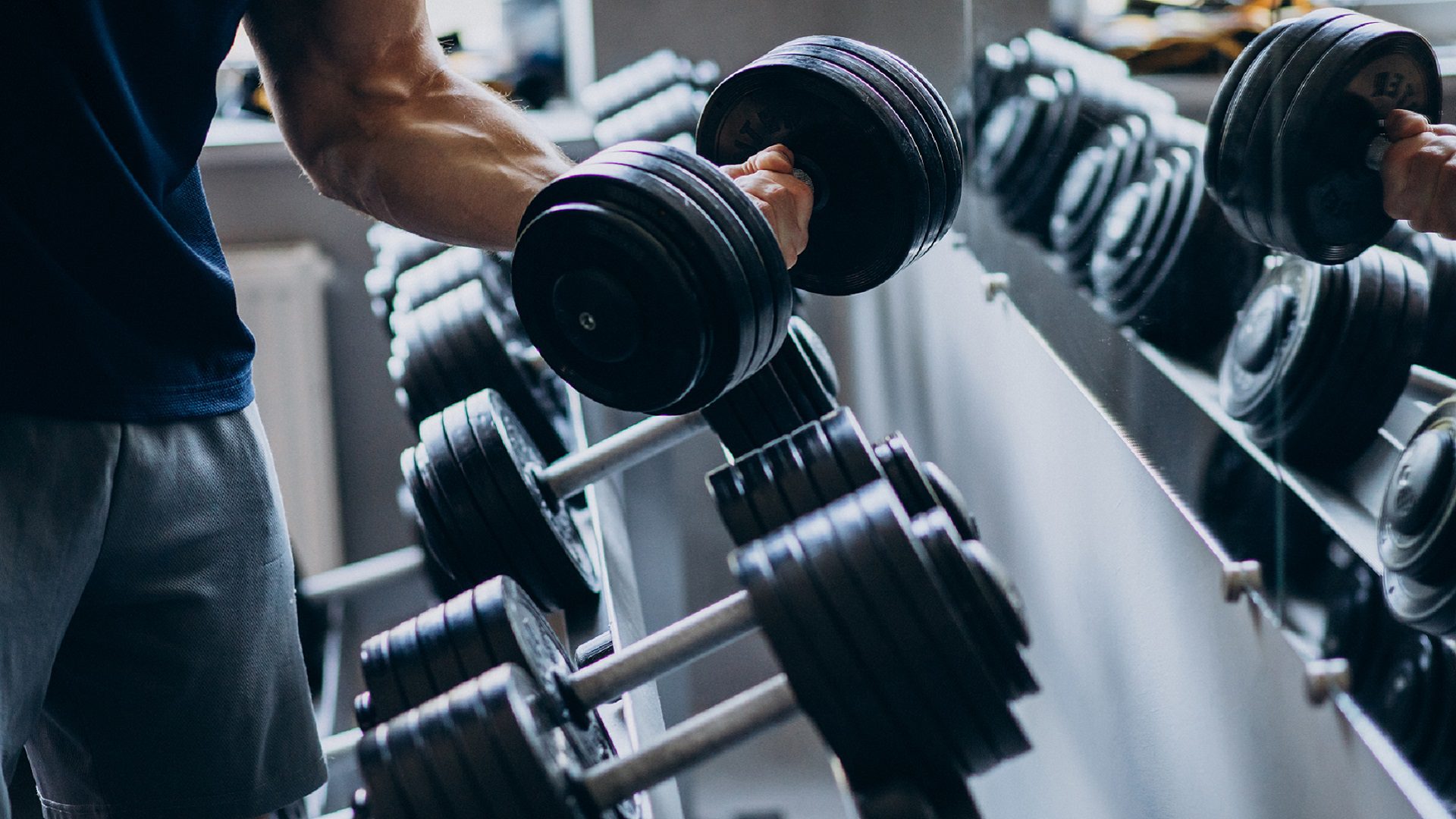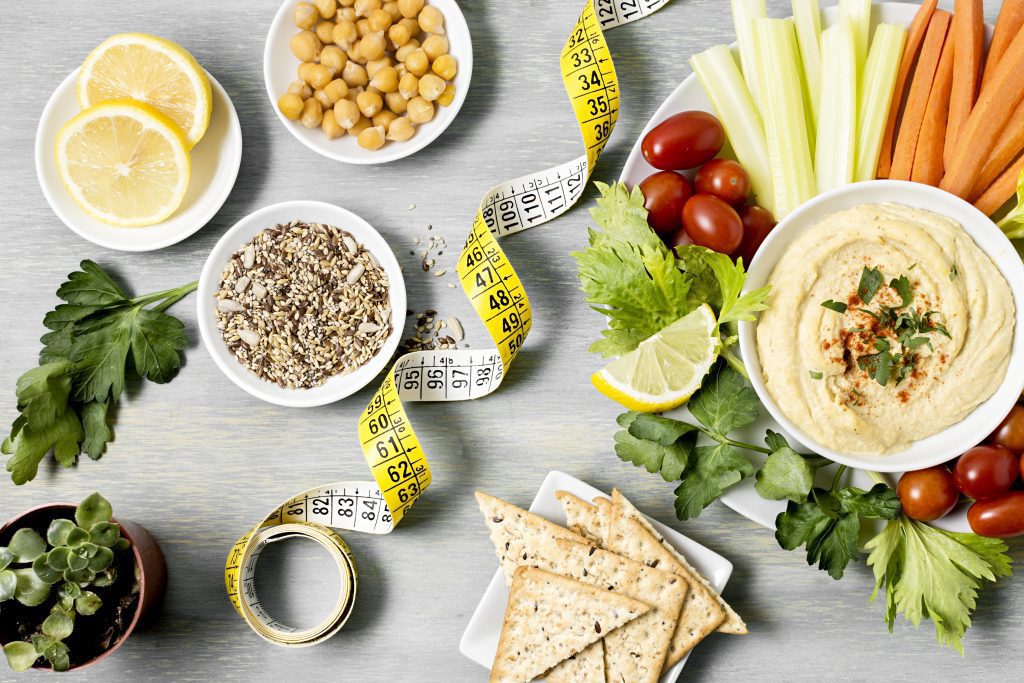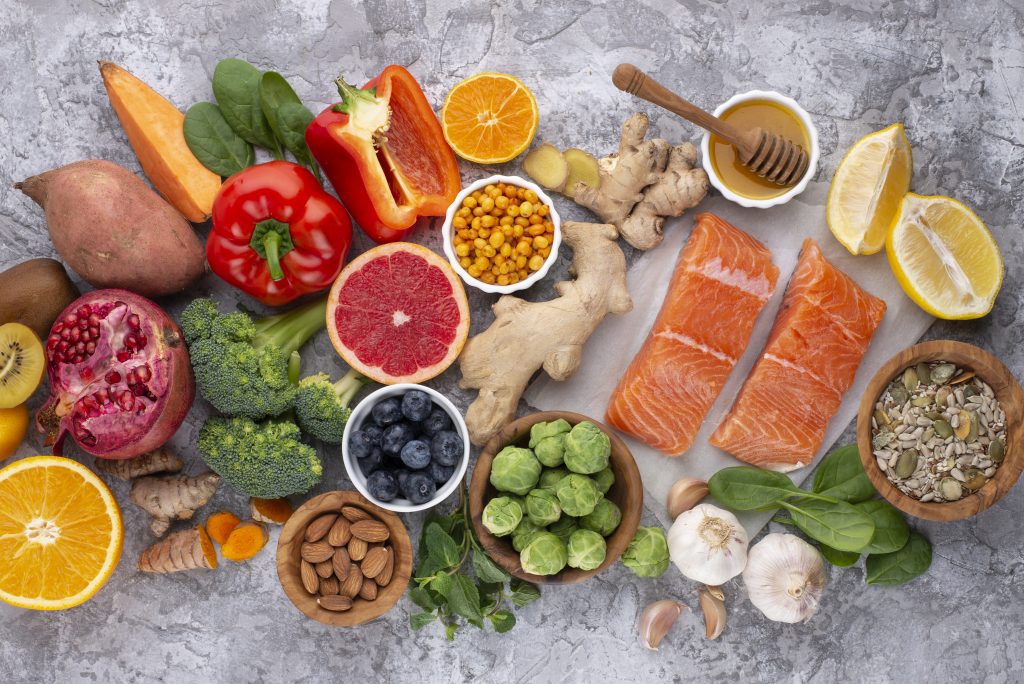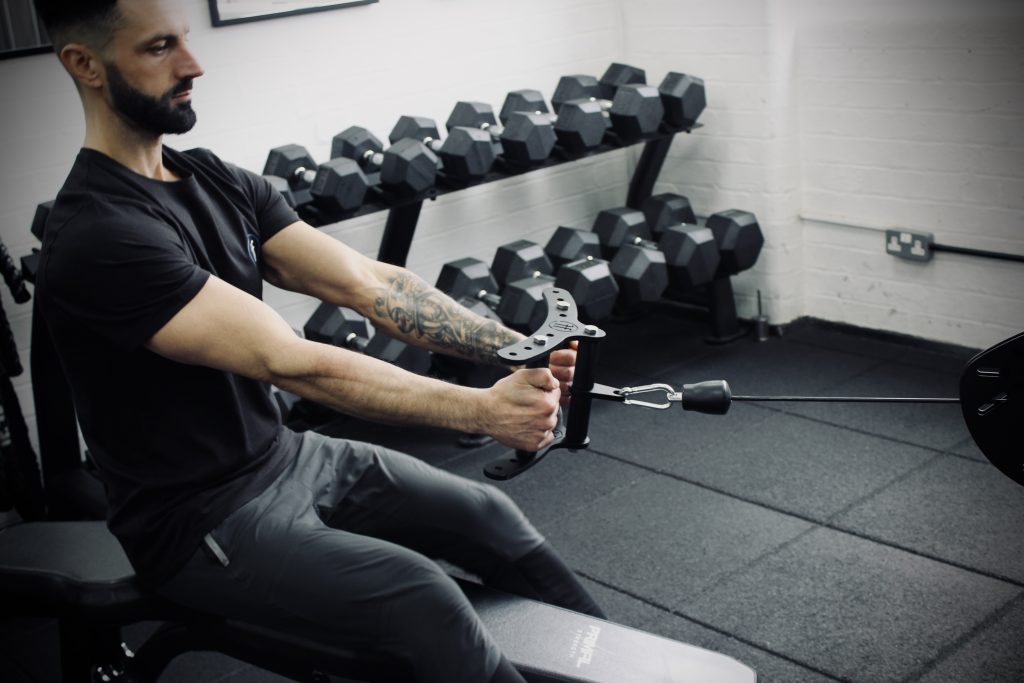Top 10 nutrition tips for building muscles

Share This Post
There are several components that help make building muscle practical. And whilst we often look to physical activities as the primary way to build muscle, it’s not the only way and in fact, focusing solely on physical activity to gain muscle, can actually lead to disaster. Instead, finding the right nutrition for building muscle is a wise way to ensure you’re building muscle mass effectively, alongside workouts. In this post, we delve into what type of nutrition is crucial for building muscle.
Benefits of Building Muscle Mass
Whilst you may be aware of the positive aesthetic impact of building muscle mass, it’s also important to know that there are both physical and mental health benefits to building muscle mass too. For example, you can benefit from better bone health by building optimal muscle mass. This helps to reduce conditions such as osteoporosis or bone fractures as you age.
On top of this, muscle mass and strength make it easier for you to complete fitness activities like weightlifting and other workouts for muscle growth. Building muscle also helps with insulin sensitivity, since the body is more sensitive to insulin following a workout. This can then help fight diseases such as diabetes.
But let’s not forget about the mental health impact of building muscle mass too. The endorphins you receive after partaking in physical activity mean that you’re likely to never regret a workout. Strength training through building muscle mass helps boost your confidence, both in the aesthetics of your body, as well as the internal good you’re doing to it. This form of training also helps your brain function better.

How Does Nutrition Impact Muscle Growth?
Nutrition is a key way to ensure you’re effectively building and maintaining muscle. We’ve all heard of the popular phrase – you are what you eat – and this rings true in the area of building muscle too. You should keep a close eye on what you’re eating when training to gain lean muscle.
Getting the right nutrition for building muscle helps support the muscle protein synthesis process where muscle protein is produced. Getting the right amino acids and protein is essential to this as they help to repair and maintain muscle tissue.
Nutrition also helps the anabolic window, which is the period of time directly after your workout when your muscles begin to recover and repair. This aspect of building muscle means that scheduling the time of your nutritional intake also helps you eat for muscle gain. According to Healthline, it’s important to consider your pre-workout window in your nutrient timing and research highlights that this may be even more important than your anabolic window. Healthline gives the example that if you eat a balanced and digestible meal about 60- 150 minutes prior to working out, this could improve your performance.
Deciding what your fitness and health goals are in regard to building muscle can help you better decide your nutrient timing.
Muscle Mass and Weight Management
In your muscle building goals, it’s also important to consider how this works alongside weight management. To do this, let’s first delve into the role that muscle mass plays in weight management. Muscle helps to boost your metabolism which therefore helps your overall health. By building muscle, you can help better maintain a healthy weight by increasing your basal metabolic rate. Although muscle tissue weighs more than fat tissue if they both take up the same space, you shouldn’t be too overly focused on the fact that building muscle could cause you to weigh more, as long as it’s performed in a healthy manner. Weight loss naturally happens when energy expenditure is increased through exercise. But there are particular exercises that help you with weight management.
Strength training is a top exercise method to build muscle whilst also aiming to reduce fat for weight regulation. Of course, being mindful of your nutritional intake also plays a part in how effective weight regulation will be through this method. Try to avoid unhealthy foods like saturated fats if you’re trying to build muscle and include protein to help.
How Building Muscle Boosts Metabolism
Your basal metabolic rate is the rate at which your body uses energy for everyday activities including breathing, blood circulation and more. Essentially the more muscle you have, the faster your metabolism

How Many Calories Do You Need in a Diet for Building Muscle?
Counting your calories is also key to your muscle-gain journey. But the amount of calories you specifically need to build lean muscle may depend on your body. So it’s worth looking at a calorie calculator to work that out for yourself. However, a general rule, according to Maxi Nutrition is that most people need 20 calories per pound of body weight to gain muscle mass.
What’s the Best Macronutrient Ratio for Muscle Gain?
The macronutrient ratio for muscle gain impacts how you choose to balance your diet and its effectiveness in muscle gain. According to Ideafit.com, a typical template for weight loss and muscle gain is 30% protein, 30% fat and 40% carbs per day. This is an easy step to follow and stay on track with your nutrition intake. Making sure you add enough fibre in your meals is another important factor of nutrition. A high-fiber diet supports gut health and digestion, and helps regulate blood sugar levels by slowing down the absorption of sugar into the bloodstream. This then helps to prevent energy crashes and allows for more consistent energy levels throughout the day. These factors are essential for optimal athletic performance, strength, muscle building and general health.
Protein is a primary building block of muscle because it helps to grow, maintain and repair muscle tissue.
The role of carbohydrates in building muscle is that they convert partially to glycogen, which is a type of energy that is stored in your muscles. It therefore helps to fuel you when working out.
The good fats such as monounsaturated and polyunsaturated fats in your balanced diet plan also play a role in building muscle. They help increase good cholesterol in your body, which then helps to promote hormones and amino acids. These are building blocks of protein that are key to building muscle.

What Are the Best Foods for Muscle Gain?
So, we’ve covered why nutritional intake is important in relation to muscle development. Now let’s delve deeper into the best food groups that help to provide this for you. From protein to carbohydrates and fat, here are the benefits of each food group for your nutritional diet in gaining lean muscle.
LEAN PROTEIN SOURCES
1. Chicken – Chicken breast is lean meat and is particularly revered for gaining new muscle because of its high source of protein. It packs a whopping 26.7 grams of protein per 85g serving. B Vitamins are also rich in chicken breasts, which helps with physical activity and muscle development. Chicken breast is also pretty filling so it’s ideal to have as part of your dinner after an intense workout.
2. Turkey – Similar to chicken breast, turkey breast is also a high source of protein with an 85g serving providing about 26g of protein.
3. Fish – Salmon, herring and mackerel are sources of fish that are high in omega-3 fatty acids. Fish oil has anti-inflammatory properties which can help reduce muscle soreness. Research has also indicated that fish oil can help increase your muscle’s sensitivity to protein and therefore help with greater muscle gains.
4. Eggs – Eggs are another great form of high-quality protein because they supply all of the nine essential amino acids. It, therefore, is an ideal food to include in your post-workout meal.
5. Plant-based Protein Options – If you’re not a meat eater, there are still great alternatives for protein to help you gain muscle. For example, 1 cup of tempeh holds about 31g of protein and 1 cup of tofu contains about 20g of protein.
Complex Carbohydrates
1. Brown rice – This is a good whole foods alternative to white rice as it is less processed and contributes to muscle repair, helping to fill glycogen stores.
2. Quinoa – Like eggs, quinoa also contains all nine essential amino acids, making it a great source of protein to help with muscle recovery, repairing and building after working out.
3. Sweet potatoes – This is a good source of fibre which helps build muscle and burn fat. 1 cup of sweet potatoes contains about 8 grams of fibre.
4. Oats – Oats are a fantastic source of minerals including magnesium and zinc which helps in muscle growth and recovery.
Healthy Fats
1. Avocado – This fruit is rich in folic acid (B-9) which helps to absorb protein and helps to produce muscle growth. A 50g serving of avocado equates to about 22 grams of fat 9 15 grams monounsaturated, 4 grams polyunsaturated, 3 grams saturated).
2. Nuts and Seeds – Brazil nuts, pumpkin seeds and walnuts are examples of healthy fat sources, specifically in relation to omega-3 fatty acids.
3. Olive oil – Olive oil is rich in healthy fats, minerals and vitamins that help with building muscle and its anti-inflammatory properties help repair damaged muscles.
4. Coconut oil – Incorporating coconut oil into your food post-workout can help recharge intramuscular fatty acid and help you feel more energised after exercise.

How to Build Muscle Mass
So, what specific types of exercise help with building muscle alongside your nutritional intake?
Well, resistance training is an example of this. It targets muscle strength through your muscles working together against a weight or force. Exercise equipment that uses multi bars for example or even slant blocks are often associated with resistance training. But avoid overloading yourself with resistance training and stick to the principles of progressive overload that recommend you to keep to 10% or less each week of increases of time, weight or intensity to reduce the risk of injuring yourself. At the same time, allow space for your body to gradually adapt to your workout.
Generally when it comes to choosing the right workouts for building muscle, the exercises that use the more muscles together, the better. A typical guide to performing compound exercises for muscle gain is that you should regulate the exercises with 3-5 sets of compound movements prior to 3 sets of 1–2 isolation movements for each workout.
But whichever type of workout or training method you choose to build muscle, what remains essential to keep in mind is the importance of rest, recovery and sleep in the process of building muscle.
Supplements
Dietary supplements also play a part in nutritional intake to build muscle mass. But whilst they can support muscle growth, it’s important to note that they shouldn’t be used as a complete replacement for food, but rather an enhancement of your nutritional diet.
Examples of essential supplements include protein supplements like whey and soy protein. This is particularly handy if your body struggles to get enough protein from protein-rich foods. Creatine supplements can help increase the levels of creatine molecules that naturally occur in your body. This then helps your muscle cells and enhances your exercise performance for muscle gain. Other examples of key supplements include BCAAs which help with strength and reduce soreness post-workout. Research also indicates that supplementing BCAAs is better than getting them from your diet. Beta-alanine has also been shown to help increase muscle and better performance for workouts.
Common Nutrition Mistakes to Avoid

Whilst we’ve discussed the importance of consuming nutrients to assist muscle growth, it’s also important to identify common mistakes to avoid in this. For example, eating too many nutrients and uncontrolled bulking can be counter-productive to building muscle. When trying to build muscle, make sure you are balanced in what you consume in relation to your goals. Relying heavily on processed foods is also a rookie error as it can cut out key nutrients that you would get from whole foods.
Neglecting micronutrients in your diet should also be avoided. And perhaps something we can all relate to is the importance of hydration. Water should be your best friend, whether working out or just waking up, ensure your body has enough water to keep hydrated throughout the day.
Key takeaway
Overall, a key point to remember for nutrition muscle growth is the 30/30/40 method for a healthy balance of protein, fats and carbs. Try to organise your meals in a way pre and post-workout that work well with the food’s specific benefits to maximise muscle gain. Stay hydrated and remember rest is important too.
Consistency is also key to ensuring you’ll get results from all the hard work you put in to build muscle mass. Also, remember that the equipment you use to train is another key way to get results.
At Forte Fitness, we offer premium fitness equipment that is accessible and compatible with fitness fanatics and injury recoverees alike. Have a look at our online store to learn more about our quality fitness products.
Be The First To Know
Subscribe for 10% OFF on first order
See our full Terms and Conditions and Privacy Policy and Cookie Policy to find out more.

We believe that great movement and strength should be the foundation for any training methodology. We make fitness equipment that is great for a huge range of fitness and movement styles. Our goal is to help you train frequently and safely for many years.




More To Explore
The Ultimate Guide to Skipping: Unlocking Strength, Balance, and Stress Relief with a flow rope
Flow rope training is a dynamic workout method that involves using a thick braided rope to create rhythmic, fluid movements. Unlike traditional jump rope exercises, a flow rope workout doesn’t necessarily require jumping. Instead, you move with the rope rather than against it, making it an excellent workout for balance, coordination, and relaxation. Popular among
The Benefits of Training with a Weighted Vest: Boost Your Strength and Endurance
Integrating a weighted vest into workout routines is an increasingly popular fitness strategy aimed at enhancing the effectiveness of various exercises. This comprehensive guide examines how weighted vests can significantly boost physical fitness by increasing the intensity of workouts, details the potential risks, and offers insights into maximising benefits while minimising potential drawbacks. What is